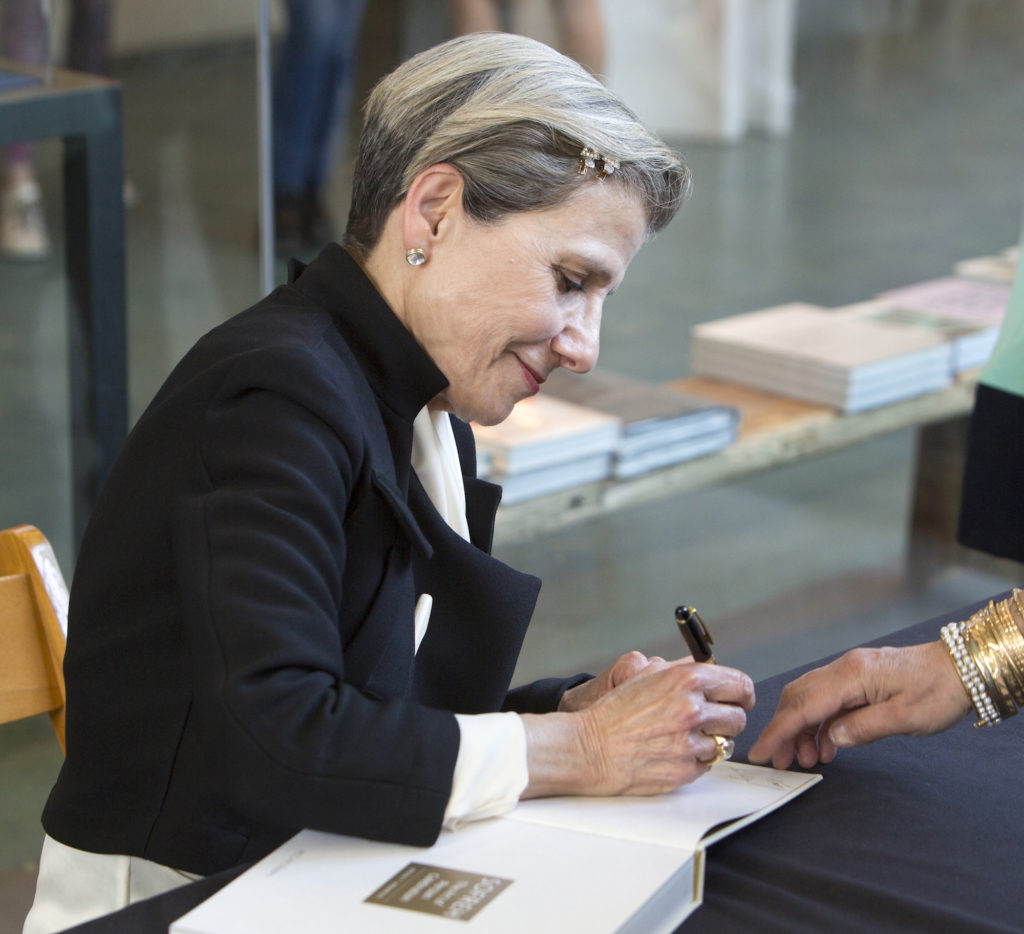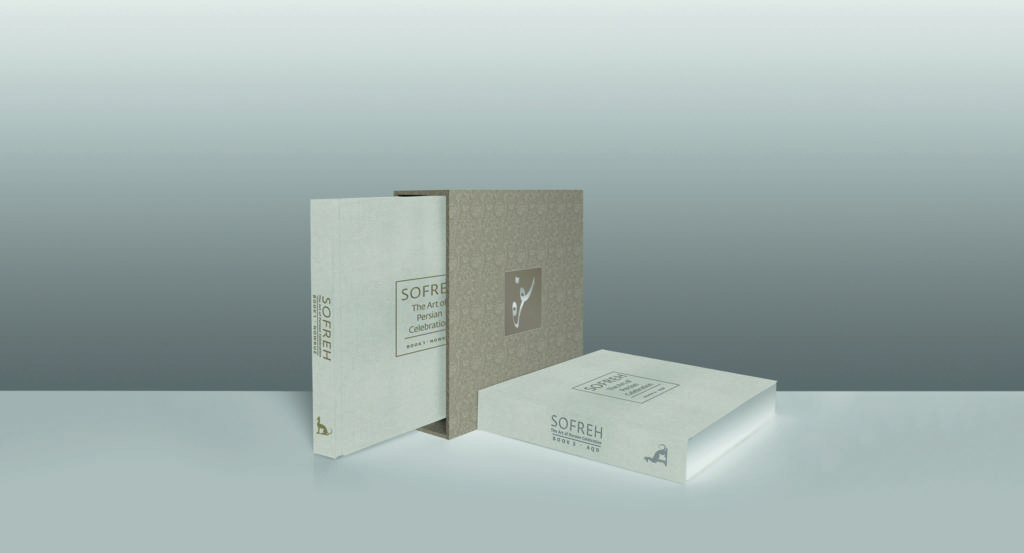The Persian New Year, known as “Nowruz,” meaning New Day is upon us! It is a celebration of renewal, of life and of light, and it is celebrated by Iranians (and other nationalities) around the world at the turn of Winter into Spring (also known as the Spring Equinox).
There are many traditions associated with Nowruz. One of the most eternally recognizable of these traditions is that of the sofreh, or spread. Families will create a spread on a carpet, or more recently on a table, containing items that are placed in an artful arrangement, each of which has some meaning or symbolic significance. The spread contains haftsinn, seven items (at least) whose names start with the letter “s”.
There are two main times when sofrehs are laid out — during the Persian new year, and during wedding ceremonies.
Given that it is Nowruz, we have interviewed an authority on the traditions pertaining to sofreh, the venerable Maryam Khosrowshahi, the author of the new two volume book series, SOFREH: The Art of Persian Celebration to learn more about this ancient, yet thriving and evolving art form.
The series comes as two hardbound volumes that bring the traditions of sofreh to life with beautiful pictures and commentary throughout.

Maryam Khosrowshahi, Author of “Sofreh: The Art of Persian Celebration”
INN: Thank you for taking the time for this interview about your new book collection SOFREH: The Art of Persian Celebration.
I commend you on producing this important work capturing and essentially telling the story of this ancient Iranian custom and art. What motivated you to do this?
M.K.: Thank you for your generous comments. My motivation originates from my interest in textiles and flowers. Both elements play a significant role in assembling a sofreh. More importantly, having lived, most of my life outside Iran, I was vividly reminded of my heritage during the two celebrations which form the subject of the book—hence for me these are important occasions and merit attention. Another factor is that the art of sofreh is essentially ephemeral, and it was important to keep a record of these fleeting designs. I am also particularly interested in documenting and preserving these traditions for the benefit of the younger generations of Iranians, especially those in the diaspora.
INN: Please tell us a bit about the essence of the art of sofreh. What is it’s main purpose?
M.K.: I can say that one of my dominant goals in pursuing this project was to emphasize the aesthetics and the artistic aspects of the tradition of sofreh. To my knowledge, never before, have the splendour and beauty of these ancient traditions been presented in such an intricate and novel fashion. The fact that the preface of the book is contributed by Parviz Tanavoli, a well-known artist, endorses the artistic emphasis of the project.
INN: In the books, you showcase a wide variety of sofrehs from different times and cultures. What would you say are the unifying themes among the different variants?
M.K. In the historical essays, Dr Willem Floor discusses the origins of sofreh, its manifestation at different times and in different parts of Iran. I believe ultimately, sofreh is a mosaic of symbolic elements representing life, light, love, peace, hope and optimism—it is about good health and fortune (e.g. garlic and coins); joy and happiness (e.g. flowers and foliage); abundance and prosperity (wheat, bread and coins); fertility and rebirth (apples, pomegranates, eggs and germinated seeds), etc. As far as my creations are concerned, my primary objective was to create an aesthetically pleasing composition while respecting the traditional core and symbolism of the customs of sofreh.
INN: Being an art that is practiced in homes during the Persian new year, and during wedding ceremonies, it would appear to be an art form that gives the purveyor (or person putting it together) a considerable amount of freedom both in terms of substance and in presentation. What are the prevailing messages or symbols used in today’s sofrehs?
M.K.: Clearly the final manifestation of a sofreh is dependent on the selections made by the creator—textiles, flowers, containers, colour scheme etc. While including, at least, certain symbolic elements is usually observed, there is no blueprint for setting up a sofreh. Hence, it does give the creator the freedom of expression. However, I am not sure if everyone has looked at setting up a sofreh as creating a work of art. In the book, I have certainly tried to embrace and promote this aspect.
The following quote from the Foreword section in Book One may be appropriate here and in relation to the previous question: “Efforts have been made to present the most elegant aspects of these ancient Persian practices, which I believe have not been adequately documented. While I have freely altered or reinvented traditional sofreh compositions for Nowruz and aqd [wedding in Persian] in an attempt to convey their splendour, I have nevertheless respected and preserved their traditional core, dynamics and symbolism.”
INN: Iran has been through many political and social shifts since the millenia-old craft of sofreh was started. It’s a testament to the unifying power it holds in the culture that it has survived for so long. What do you think is the reason for this longevity?
M.K.: While this publication addresses the history and origins of the Persian celebrations and the sofreh tradition, it is not about their social and political evolution. From my point of view the reason for this longevity, is because of the originality of sofreh, its beauty and its power of drawing people together. People GATHER AROUND a sofreh-ye Nowruz or aqd. I am witnessing that young women of Iranian origin who are not even born in Iran, and are raised with different traditions are requesting their families to spread a traditional sofreh-ye-aqd for their marriage ceremonies. I am hoping that this observation is a good indication of the ever-lasting popularity of the sofreh tradition.
INN: Of course, Iran had a revolution four decades ago that politicized everything. How has this impacted the art of sofreh in modern Iran?
M.K.: I have not lived in Iran for over forty years—since 1976. The book project does not concentrate on the evolution of sofreh in the last four decades. My emphasis as the initiator of the project has been to celebrate the art and beauty of the Persian sofreh. I have permitted myself to pick and choose the most elegant elements and aspects of the sofreh tradition to create a piece of art.
INN: Do you see differences in how Iranians in the diaspora create their sofrehs vs. Iranians in Iran?
M.K.: Having been away from Iran for many years, I cannot say how Iranians in Iran today create a sofreh. Moreover, the examples of the sofrehs presented in the book, created by and for the Iranians in the diaspora, are my selections and creations. I have taken the liberty to present and promote my idea of beauty in relation to creating a sofreh. While efforts have been made to showcase a comprehensive variety, creating beauty and harmony has stayed a top priority.
INN: From a demographic perspective, how do you see newer generations of Iranian’s interest in the art? Are they carrying the mantle? Is the tradition going to survive among Iranians in the diaspora?
M.K.: As far as the art of creating a sofreh is concerned, I am hopeful that the tradition will survive amongst the younger generations in the diaspora. It would sadden me to think that these exquisite traditions will be fading out. Given the fact that many of them have already disappeared, it would not be surprising if more follow suit. However, I am hoping that this publication would serve as an effective tool to decelerate this trend.
INN: Thanks again for taking the time to answer my questions. The books are beautiful and I hope everyone with a love of Iranian culture will purchase them and read them. These would make great additions themselves to sofrehs around the world and I hope to see one on as many tables as possible this Nowruz.
M.K.: I am grateful for your interest in SOFREH and very encouraging comments. As far as I am concerned, this is a cultural and non-commercial project. An immeasurable amount of time, work and effort has been dedicated to creating the compositions, presenting the text and the design of the book. SOFREH is an enduring gift, and I would be so pleased if it could eventually get into the hands of all those interested in Iran and its culture.
The official website for the books is: www.sofrehartofpersiancelebration.com

The two volume “Sofreh: The Art of Persian Celebration” by Maryam Khosrowshahi

